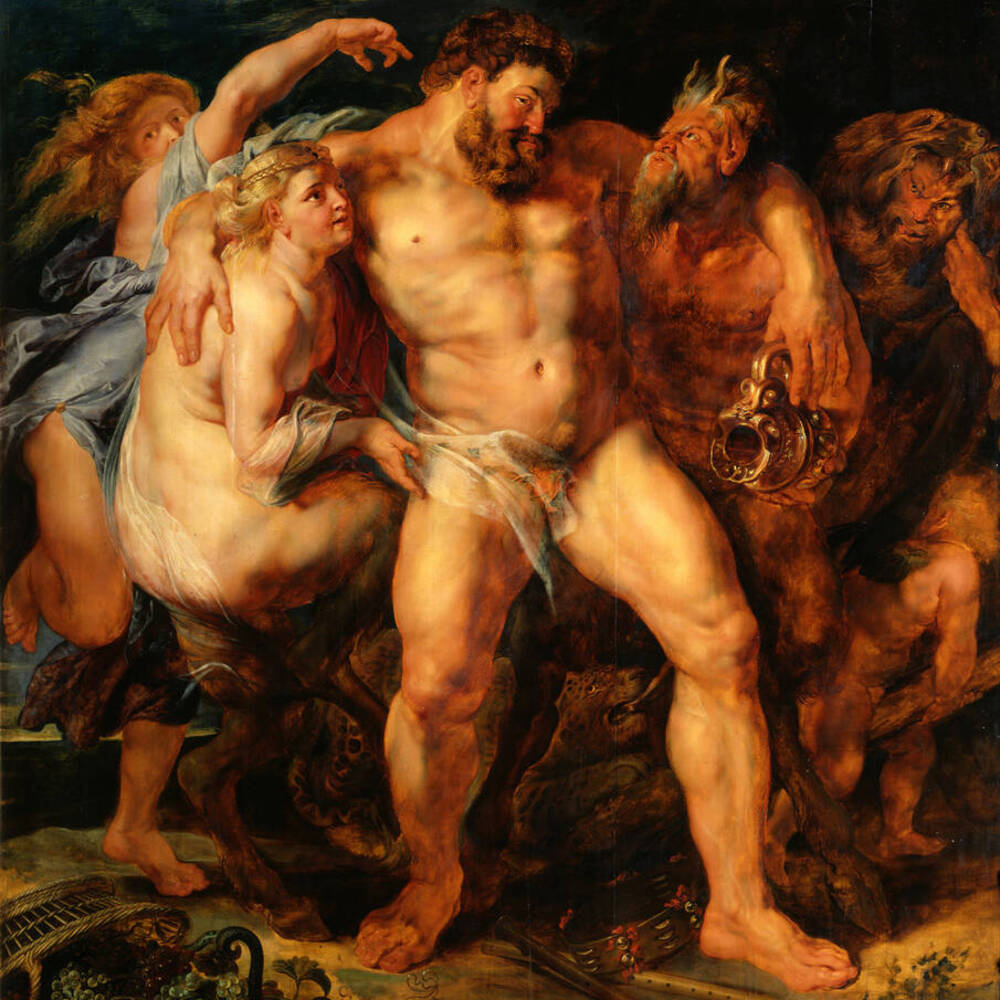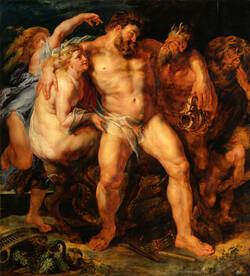Hercules, one of the most important heroes of Greek mythology, was revered as a god of protection in antiquity because of his strength and courage. Rubens, however, depicts him in a moment of weakness: after consuming excessive amounts of wine, his powers have left him, so that he has to be supported by a satyr couple. This monumental three-figure group is based on an ancient relief that Rubens had seen and drawn in a Roman collection during his years in Italy.
Further Media



Hercules – or Heracles, in Greek mythology – was one of the greatest heroes of antiquity. His father was Zeus, king of the gods, and his mother the beautiful mortal Alcmene, wife of a king. So even as a baby, Hercules was an object of hatred for Hera, Zeus’s jealous wife. Hercules experienced all the highs and lows of human existence, killed his music teacher in anger, and his wife and children in a fit of madness. He only found peace after he had atoned by using his superhuman strength to complete his twelve labours. Ironically, it was his second wife’s jealousy which ultimately killed him. But rather than Hercules ending up in the underworld, Zeus raised him to a god. Hercules ascended to Mount Olympus and there married again – this time the goddess Hebe, daughter of Zeus and Hera.
In the Renaissance, artists discovered Hercules as a model for presenting muscular, male bodies. Their works show Hercules as a warrior, but also his human side caught between his duties and love of life. In many of his works, Rubens especially explores the theme of Hercules as a daredevil and playboy. In his painting The Drunken Hercules, Rubens shows the great hero after a drinking spree, incapacitated, unable to reach home on his own, let alone upright. One satyr supports Hercules, while another has thrown the hero’s signature lion’s skin over himself – and down below to the right, a chubby putto is dragging along Hercules’s legendary club. So Hercules is not just naked. He has also been robbed of his two most important attributes, and so turned into a staggering, harmless man. Incidentally, the leopard at the base is Rubens’s way of telling us that Hercules lived in better times, the so-called ‘Golden Age’, when people and wild animals dwelt together in peace.
Even today, after more than 400 years, Rubens’s paintings seem incredibly alive. He had adapted his painting technique to the considerable speed of production in his workshop.
For this painting, Rubens took a thin oak panel as the painting surface, first applying a ground of chalk and lime. Then he added a layer of colour – a light grey imprimatura. This thin coloured paint layer regulated the absorption of the ground, allowing Rubens to create a visually vibrant surface with clear brushstrokes. With a brush and brown pigment, he then sketched the underdrawing of the subject onto the imprimatura.
In the painting process, he filled out this underdrawing though, unlike other artists, without entirely covering it. Rubens also consciously integrated the effect of the imprimatura. In a very ingenious way, he combined minimally worked sections with virtuoso densely painted areas – mostly in the faces and bodies.
On the skin especially, he produced a quite unique effect by applying several merging layers of colours of warm and cool tones.
- Location & Dating
- c. 1613/14
- Material & Technique
- Oil on oak panel
- Dimenions
- 220 x 200 cm
- Museum
- Gemäldegalerie Alte Meister
- Inventory number
- Gal.-Nr. 987